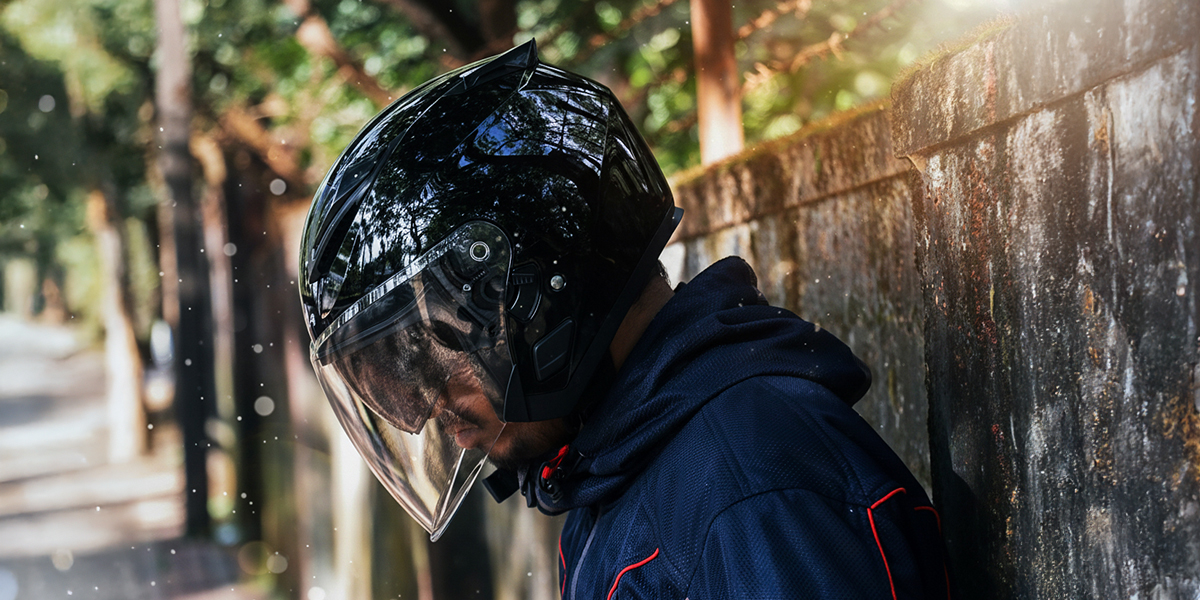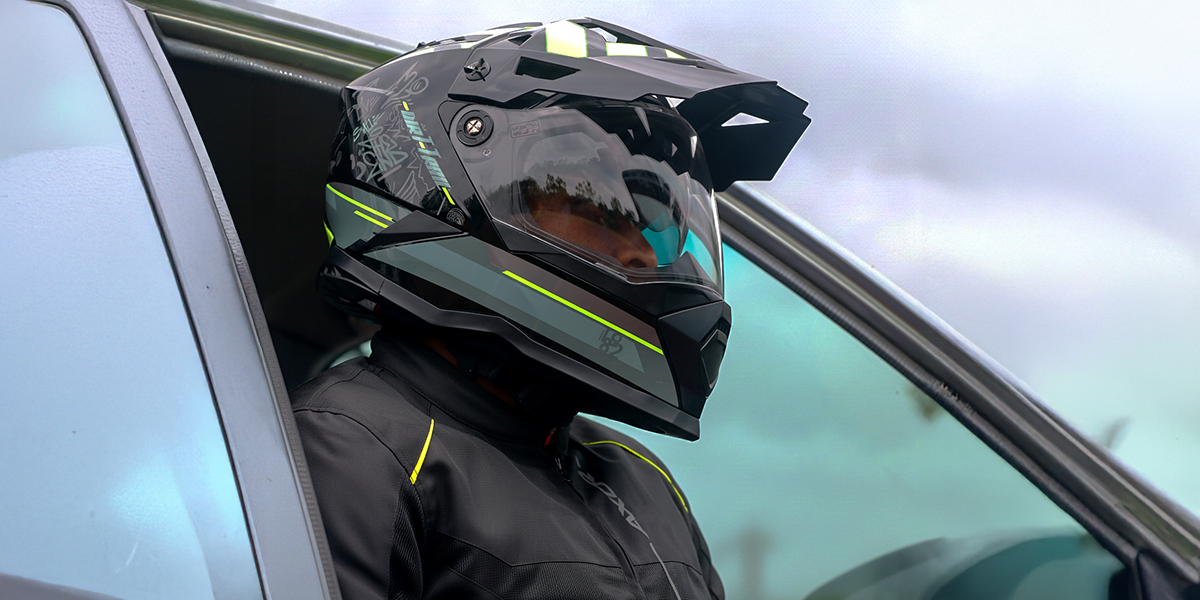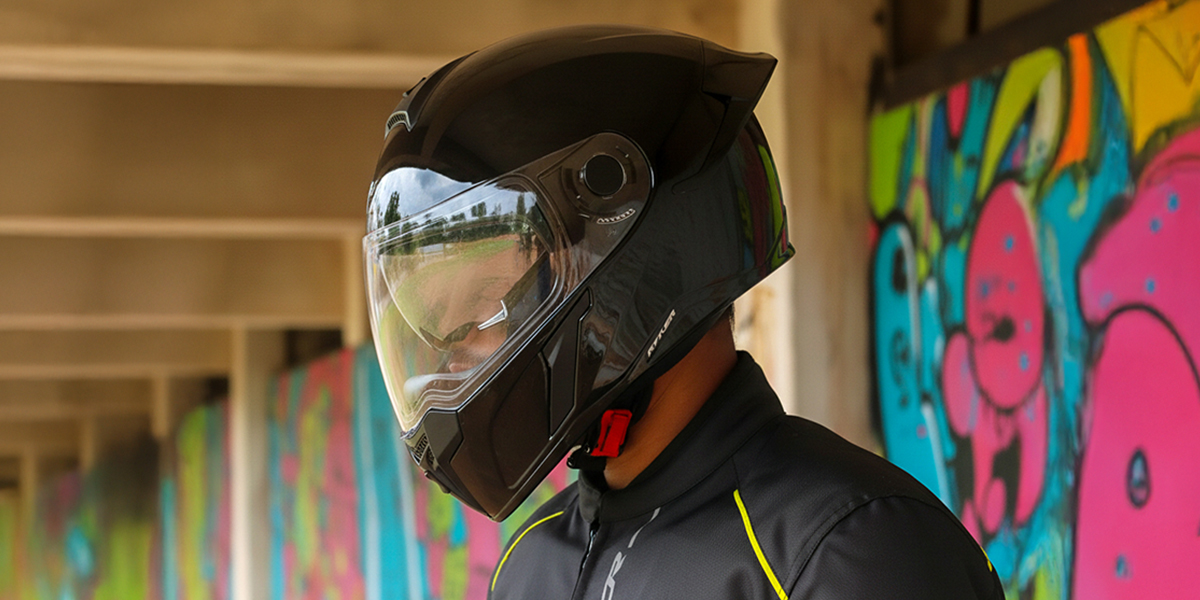
See the Road Clearly: A Guide to Helmet Visor Types
- -
Introduction
The visor of any motorcycle helmet is essential since it helps to shield your eyes and guarantees good visibility while riding. Choosing the greatest helmet visor type for your particular riding conditions and wants depends on knowing the several ones that are available. From low-tech clear visors to advanced photochromic and anti-glare choices, every kind has special advantages. This Vega Auto article will go over the several helmet visor styles and assist you in choosing one for a more comfortable and safe ride. More than just a piece of plastic, the visor on your motorcycle helmet is your main protection from wind, trash, insects and the elements.
Choosing the right helmet visor can greatly improve your whole riding experience, lower eye tiredness, and increase your visibility. Whether your preferred visor technology and material is for daily commuting or weekend adventures, knowing the subtleties is essential.
Vega Auto is dedicated to rider safety and vision clarity, this guide will help you negotiate the many worlds of helmet visors.
Table of Contents
- Clear vs Tinted: When to Use Each
- Anti-Fog and Anti-Glare Visors Explained
- Photochromic and Mirrored Visors: High-Tech Options
- How to Choose the Right Visor for Your Riding Conditions
- Conclusion
Clear vs Tinted: When to Use Each
Light circumstances define the basic decision between clear and tinted helmet visors. Your constant friend on any ride where natural light is either limited or missing is a clear visor. Imagine late evening returns, early morning commutes before the sun completely rises, nighttime trips, or even exploring darkly lit tunnels. Maximum light transmission is guaranteed by a clear visor, which lets your eyes adjust organically to the given illumination and view details and objects with the best possible clarity.
On the other hand, a tinted visor filters out strong sunlight and lessens glare that can strain your eyes and momentarily distort your vision, much like sunglasses might. This is especially helpful when riding in brilliant noon or when facing direct sunshine. Different degrees of light reduction are provided by different tints, hence, take into account the usual sunshine intensity you come across. Recall that the great decrease in visibility at night riding causes safety rules to sometimes forbid the use of dark shades.
Many experienced riders have both a transparent and a tinted visor easily accessible, thus they quickly swap depending on the current light conditions to ensure the best safety and comfort all during their ride.
See the difference clarity makes. Find the perfect helmet visor for your needs at Vega Auto!
Anti-Fog and Anti-Glare Visors Explained
For many riders, the struggle against reduced visibility resulting from fog and glare is ongoing, specialised helmet visor types provide good answers. Usually involving a hydrophilic coating on the inside of the visor that absorbs moisture, anti-fog technology stops the production of small water droplets scattering light and so obscuring your eyesight.
Some high-end visors use a dual-pane technology to create an insulating air gap like double-glazed windows, therefore minimising temperature variations and hence fogging. Maintaining the coating’s efficacy requires routinely cleaning your anti-fog visor with suitable materials. Filtering away polarised light waves that generate reflections from surfaces like wet roads, car hoods, and even the sun, anti-glare visors help.
Particularly in difficult lighting circumstances like riding towards a low sun, this can greatly lower eye tiredness and increase your ability to notice contrasts and details. Certain anti-glare treatments are applied as coatings, while others are incorporated into the visor material itself. Particularly on lengthy journeys or in places with lots of glare-inducing surfaces, selecting an anti-glare visor can clearly improve your comfort and safety.
Photochromic and Mirrored Visors: High-Tech Options
Photochromic and mirrored helmet visor styles are the forefront of visor technology for riders looking for the best in convenience and style. Photochromic visors darken in sunlight and lighten in its absence using light-sensitive molecules incorporated within the visor material, reacting to UV radiation. This automatic adjustment offers a dynamic answer for different light situations faced during a single ride and replaces the need for hand visor adjustments. Varied brands and models may have varied maximum darkness attained and speed of transition, though.
Mirrored visors reflect a part of the incoming sunlight, therefore reducing glare in addition to their obvious visual appeal. The mirror coating’s strength could vary from hardly perceptible to quite reflective. Mirror visors are not appropriate for all riding times, even if they are fashionable and efficient in bright settings, since they greatly limit visibility at night or in poorly lit surroundings. Moreover, compared to conventional visor materials, the mirrored coating is sometimes more prone to scratches, so careful handling and cleaning help to preserve its appearance and usefulness.
Optimise your vision for every ride, explore Vega Auto’s range of helmet visor types now!
How to Choose the Right Visor for Your Riding Conditions
Choosing the ideal helmet visor type is a very personal process shaped by your usual riding surroundings and personal sensitivity to light and weather. A photochromic visor might provide the optimum mix of ease and adaptability if your everyday drive passes through tunnels or regularly alternatively between shady areas and brilliant sunshine. In persistently sunny locations, if you ride mostly throughout the day, your best option for optimal glare reduction and comfort may be a dark-tinted or mirrored visor. Maintaining good visibility and safety depends critically on riders who regularly run across rain, fog, or frigid weather investing in a transparent visor with a premium anti-fog coating or a Pinlock insert system. Think about the time of day you most usually ride. If riding at night is regular, a clear visor is not negotiable.
Researching the particular fit of visors with your helmet type is also smart, as not all visors fit all helmets. Reading online evaluations from other riders with comparable riding conditions might offer insightful analysis of the actual performance of several visor kinds. In the end, knowing your usual riding conditions and the particular difficulties they bring will help you choose the helmet visor type that will maximise your safety and enjoyment on the road.
Conclusion
Motorcycle safety and comfort depend critically on the style of helmet visor one chooses. Knowing the several choices, from simple, clear and tinted visors to sophisticated anti-fog, anti-glare, photochromic, and mirrored versions, allows you to choose wisely that improves your vision and shields your eyes in many riding environments.
Upgrade your safety and comfort, discover the ideal helmet visor for any condition at Vega Auto today!
FAQs
1. What’s the main difference between clear and tinted helmet visors?
While tinted help to lower sun glare throughout the day, clear visors provide optimum light transmission during night/low-light.
2. Do anti-fog visors really work?
In cold or humid environments, superior anti-fog coatings or dual-pane systems greatly decrease fog accumulation inside the visor, therefore enhancing visibility.
3. Are mirrored visors safe for daytime riding?
While mirrored visors are more likely to scratch and might cause visual problems at night, they can help to lessen glare in bright situations.
4. What is a photochromic visor, and what are its benefits?
Convenience for a range of settings comes from photochromic visors, which automatically change tint depending on UV radiation, darkening in the sun and brightening in the shade.
5. How do I know which helmet visor type is best for me?
Think over your usual riding hours and conditions – day/night, sunny/cloudy, foggy). Many of the riders carry many visors for various circumstances.






